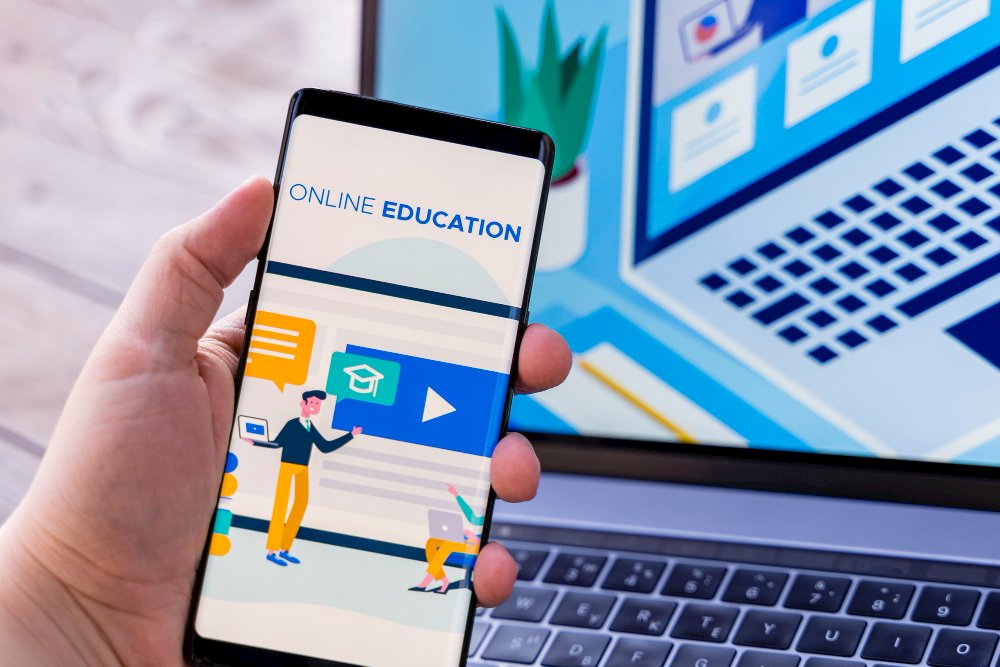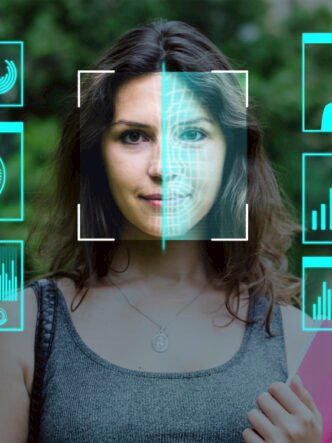E-learning opens up opportunities for learners all over the world. Some of the advantages are that it makes learning more accessible and flexible. Yet, as an online education provider, you may struggle with one persistent challenge – learner retention.
Online learners may start the online courses enthusiastically but fail to complete them. Numerous reasons make them drop off, from competing commitments to cognitive overload. G. Ebbinghaus found that learners forget more of what they learn as time goes on. This is known as the ‘Forgetting Curve’ and it may create a real challenge for you as an online educator.
Learning retention doesn’t have to be a roadblock as video content greatly improves it. Video and learner retention go hand in hand. Learner engagement videos motivate learners to learn and improve retention. The ability to store and recall knowledge helps with making decisions and increases productivity.

Why video aids memory and comprehension
Fast visual processing
Humans process visuals much quicker than text up to 60,000 times more. Visuals reduce the cognitive effort your learners require to understand information. The brain takes only milliseconds to process images. Processing text requires a longer and more complex process.
Dual coding
Videos combine visuals and audio, which the brain processes through different channels. They engage more than one sense at the same time. Dual coding theory argues that information is easier to retain when encoding is both verbal and visual.
Reduce cognitive overload
Video learning outcomes are significantly better as cognitive load isn’t as high. A video provides a concrete demonstration so learners don’t have to understand abstract concepts or interpret dense text blocks. For example, if you offer a video tutorial with a step-by-step explanation of how to understand a certain software feature, it requires less effort to understand than reading written instructions.
Emotional engagement
The use of storytelling in your videos creates emotional engagement. Learners remember stories better than they remember raw facts. Stories, especially animated stories, make abstract concepts much easier to understand. Stories also offer a familiar structure and when you weave facts organically into stories, it helps the brain to absorb and remember the information.
Flexibility
Videos offer your learners the option to learn at their own pace. They pause or replay video segments that are hard to understand. Revisiting and reinforcing concepts enhances their retention.
Repetition and re-exposure
Videos offer your learners the opportunity to revisit material at spaced intervals. Spreading out learning over time helps to flatten the ‘forgetting curve’ and strengthens their ability to retain information. With video hosting platform Cincopa, using video playlists allows learners to refresh their knowledge whenever they need to.

Role of short-form and interactive content in retention
Some videos are better than others at increasing learner retention. Short-form videos and interactive videos are proven to reduce drop-off rate and improve retention.
1. Short-form video
Attention spans are shorter today with all the distractions learners face in a digital environment. According to research, learner engagement drops sharply after about six minutes of watching a video. That’s why using short-form videos is so effective. They offer a small amount of information that’s easier to digest.
For example, it is better to offer a course of 10 videos of six minutes each covering a different marketing strategy rather than a 60-minute lecture on marketing strategies. As a learner completes each video, it offers a sense of accomplishment and a desire to move on to the next one. Short-form videos are also easier to fit into busy schedules. Learners even consume them on their mobile devices during breaks in the workday or while commuting.
A searchable video library of short-form content encourages ongoing learning. Live streaming of a webinar allows you to answer questions and saving the stream as on-demand video in the library gives learners another way to engage. Those who forget information from the live stream have access to the on-demand video to refresh their memories.
2. Interactive video
One of the best ways to increase learner retention is to make them into active rather than passive learners. Interactive videos give them some hands-on engagement.
One of the interactive elements you may include in videos is quizzes. When learners get quick feedback from completing quizzes, it helps them to identify areas for improvement and allows you to identify where they may need help. Video messaging gives you a way to communicate with them and offer support.
With clickable hot spots you give learners access to further information to reinforce their knowledge.
Branching scenarios allow learners to choose their own paths. For example, if you’re in the health field, you might use patient scenarios in videos where learners have to choose the correct treatment or diagnosis. Having to reflect and make decisions strengthens learner understanding and this helps to embed the knowledge in memory.
Real-world examples of improved outcomes with video
Higher education
Many universities and other higher education institutions integrate short-form videos and video tutorials in their programs. At MIT, researchers found that learners who engage with short video lectures remember more information and perform better on assignments than those who only use written materials.
E-learning platforms
- Khan Academy uses short-form videos to break complex topics into manageable segments.
- EdX’s university-level courses consist of lecture videos divided into short segments.
- Skillshare has creative video tutorial courses guiding learners through projects. Step-by-step guidance helps them to follow along and apply what they learn.
- On-demand e-learning platforms like Coursera and Udemy allow learners to follow video courses at their own pace.
Corporate training
- Deloitte found that shifting to short video modules for compliance training helped to increase employee retention rates. Its employees reported that the videos were easier to understand and recall in comparison to text-heavy manuals. The Deloitte Academy also offers learning programs to help employees to reskill and upskill by using a combination of theory and real-world examples.
- The Wonderful Company in Fiji has a driver-safety program that uses animated avatars of employees and voice-overs. It reinforces key safety protocols with real-world scenarios so employees know how to use safety practices in their daily operations.
- Many companies use videos for onboarding. Behind-the-scenes videos help new hires to understand more about company procedures and daily routines. AI video and visual agent provider company D-ID uses AI to create onboarding videos that feature lifelike avatars.
- Software companies often create a short video series to demonstrate key features of the platform. When the learners actively engage with the software in a real-world scenario, they have a deeper understanding and remember more. Wiz Tech Talks uses expert presentations and visual storytelling to simplify complex cybersecurity concepts.
- SoFi is a financial services platform that uses short, engaging videos to explain difficult financial concepts. These short videos cover many different topics, such as options trading for beginners.
Cincopa video hosting platform allows you to track learner engagement with your e-learning videos through analytics. This helps you to understand where learners succeed or drop off and adjust content accordingly.
Conclusion: Video as a driver of learner success
Learners experience so many benefits from e-learning but one of the challenges is persistently high drop-off rates. Video and learner retention are intricately linked. By using engaging short-form or interactive videos, learner retention will improve. There is real-world evidence to support this in many fields, including higher education and corporate training. Sign up for a free trial on Cincopa’s home page and explore what the platform has to offer to improve your video content and learner retention.









